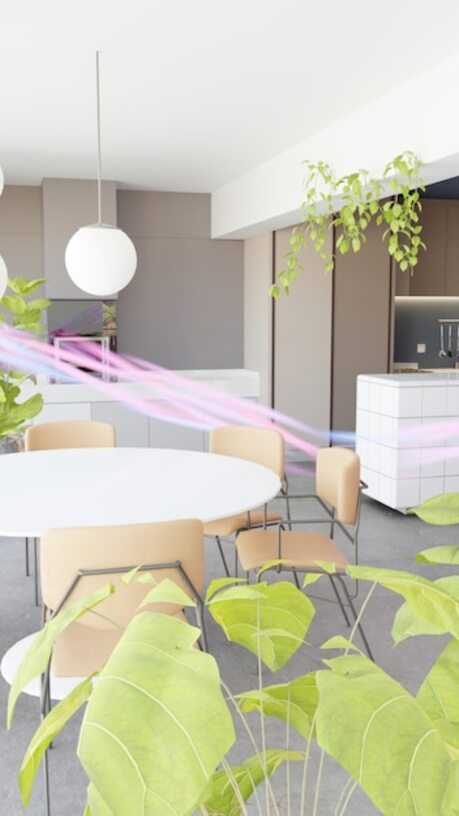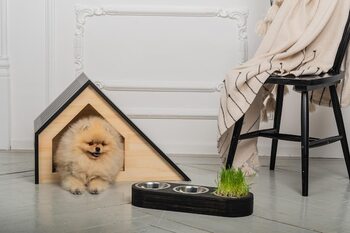Urban spaces: merging innovation and comfort in your home

Urban spaces: merging innovation and comfort in your home is an invitation to rethink how we live in the city. In a world where space is increasingly valuable, the combination of smart design and comfort becomes a necessity. This article explores how you can transform your home, integrating the latest trends that maximize functionality and style, creating an urban refuge that reflects your personality and enhances your quality of life. Discover how to innovate without sacrificing comfort.
The importance of sustainable design in urban spaces
Sustainable design in urban spaces is not just a trend, but a necessity that addresses current environmental and social challenges. Rapid urbanization has led to resource depletion and the creation of unhealthy environments. By integrating sustainability principles into the design of our homes, we not only contribute to environmental conservation but also create healthier and more pleasant spaces to live in. Using recycled materials, implementing renewable energy systems, and designing spaces that optimize natural light are just some ways we can build a home that respects both the planet and its inhabitants.
Additionally, sustainable design fosters a greater connection with the community and the urban environment. By choosing architectural solutions that prioritize energy efficiency and responsible water use, benefits are generated that transcend the individual. Integrated green spaces, accessible common areas, and the promotion of sustainable transportation help create an environment where citizens can enjoy their neighborhood while reducing ecological footprints. In this context, every decision about the design of our home can reflect a commitment to a more sustainable future and a more balanced way of life within the urban hustle.
2. Key elements to maximize space in apartments
To maximize space in apartments, it is essential to adopt a strategic approach that combines functionality and style. Starting with the selection of multifunctional furniture, such as sofa beds or extendable tables, you can transform limited areas into versatile spaces that adapt to your daily needs. Additionally, taking advantage of vertical storage is an effective technique; tall shelves and hooks on walls not only optimize the available space but also add a decorative element to your home. Every corner counts, so using creative solutions to hide objects can significantly contribute to maintaining a tidy and cozy environment.
Lighting plays a crucial role in the perception of space; a good arrangement of lights can make environments seem larger and brighter. Opting for strategically placed mirrors helps reflect natural light and create an illusion of depth. Additionally, choosing light colors for walls and furniture can contribute to visually expanding the space, creating a sense of openness without the need for major renovations. By merging these techniques with personalized details that reflect your style, you can build an urban home where every square meter is maximized without sacrificing comfort or aesthetics.
3. Smart technology: doing more with less
Smart technology is revolutionizing the way we interact with our homes, offering solutions that optimize space and improve our daily lives. Devices like smart thermostats, automated lighting, and voice assistants not only add a touch of modernity, but also enable more efficient use of resources. By integrating these systems into your urban home, you can manage energy, security, and comfort from anywhere, using only your smartphone or through voice commands. This means you can create cozy environments with just the push of a button or automatically adjust the temperature according to your preferences and schedules.
In addition to enhancing home functionality, smart technology also contributes to a more sustainable lifestyle. Thanks to devices that monitor energy consumption and suggest more efficient practices, it is possible to reduce the ecological footprint without sacrificing comfort. For example, smart irrigation systems adjust the necessary water according to weather conditions, while automatic blinds regulate natural light to keep spaces cool during the summer. This fusion of innovation and comfort not only transforms your home into an efficient urban refuge but also allows you to live more consciously and responsibly amid the city’s hustle and bustle.
4. Colors and textures that bring warmth to urban environments
Urban spaces, often characterized by their minimalist aesthetics and clean lines, can greatly benefit from the incorporation of colors and textures that add warmth. Opting for earth tones like terracotta, beige, or olive green not only brings a cozy touch but also connects the interior with nature, countering the coldness of the urban environment. Additionally, accents in natural wood or soft textiles like linen and wool can soften the atmosphere, creating a more relaxing and comfortable setting amidst the city hustle. It is essential to choose palettes that reflect both your personal style and the characteristics of the space; a warm home can be equally elegant and modern.
Incorporating varied textures also plays a crucial role in creating cozy environments. The use of plush rugs, cushions of different sizes, and light curtains can add depth and dynamism to any room. These layers not only invite visual comfort but also enhance the acoustics of the space, which is especially relevant in urban areas where noise is constant. By combining warm colors with rich textural elements, a refuge is achieved that is not only aesthetically pleasing but also functionally comfortable; a true urban oasis where every corner invites you to enjoy home.
5. Multifunctional spaces: adaptability for a modern lifestyle
In an urban environment where every square meter counts, multifunctional spaces have become essential to adapt to a modern lifestyle. The key lies in versatility: transforming furniture, areas that serve multiple functions, and smart storage solutions allow for maximizing the available space. For example, a living room can turn into an office during the day and a cozy retreat at night simply by rearranging a few elements. This flexibility not only optimizes the use of the home but also responds to the changing dynamics of our daily routines.
Additionally, multifunctional spaces foster a sense of community and connection within the home. By integrating common areas with private zones, family interaction is promoted without compromising intimacy. Imagine an open kitchen flowing into a living room or a bedroom that can be temporarily converted into a gym; these configurations are not only practical but also enrich the daily experience by facilitating shared activities and memorable moments. Thus, by designing adaptable spaces, functionality is maximized, and a welcoming environment is created that reflects contemporary lifestyle and individual needs.
6. Vertical gardens: nature amidst concrete
Vertical gardens emerge as an innovative solution to incorporate nature into urban environments, where space is often limited. This trend not only transforms building facades and interior walls into stunning green murals but also contributes to the improvement of air quality and the emotional well-being of those who inhabit these spaces. Vertical vegetation offers an aesthetic and functional way to enjoy the benefits of nature without the need for large expanses, turning any forgotten corner into a vibrant oasis.
In addition to their visual appeal, vertical gardens are highly versatile and can adapt to different decorative styles. From aromatic plants that bring freshness to colorful flowers that enliven the atmosphere, these installations can be customized according to the tastes and needs of the owner. Implementing a vertical garden at home not only beautifies the environment but also creates a favorable microclimate that helps regulate indoor temperature. Thus, merging innovation and comfort translates into a healthier and more welcoming home, where every element contributes to enhancing our daily experience in the city.
7. Modular furniture: flexibility and style at your fingertips
Modular furniture has become an ideal solution for those living in urban spaces, where area optimization is essential. This trend offers the possibility to customize and reconfigure furniture according to the user's needs and tastes. With systems that allow combining different modules, you can create a versatile environment that adapts to any activity, whether it's hosting friends, working from home, or simply relaxing. Moreover, its contemporary design ensures that each piece is not only functional but also stylish, making your home a reflection of your personality.
The flexibility offered by modular furniture not only facilitates better space organization but also allows for experimentation with different configurations without the need for significant investments. From adjustable shelves to sectional sofas, each element can be relocated and transformed to respond to your daily dynamics. Thus, this furniture is not only a practical option; it represents a statement of intent about how you want to live in your home: modern, adaptable, and always ready for the unexpected.
8. Natural lighting: harnessing light to create harmony
Natural lighting is an invaluable resource in urban space design, as it not only enhances the aesthetics of a home but also directly impacts the well-being of its inhabitants. By maximizing the entry of natural light, a warmer and more inviting atmosphere is created, which helps reduce the use of electric energy during the day. Incorporating large windows, skylights, or even glass walls can transform any room into a bright and vibrant space. Furthermore, being in contact with sunlight promotes the regulation of the circadian rhythm and improves overall mood.
Making the most of natural light goes beyond simply allowing it in; it involves understanding how it interacts with different elements of the home. The right choice of colors and materials can amplify its effect: light tones on the walls reflect light better and make spaces appear larger. Additionally, it is essential to consider the arrangement of furniture to avoid obstructions in the light sources. With a strategic design that prioritizes this connection to the outside, you can create a harmonious environment that is not only innovative and functional but also deeply relaxing and revitalizing for all members of the household.
9. Decorative accessories that define your urban space
Decorative accessories are the finishing touch that defines the personality of your urban space. In an environment where every square meter counts, choosing pieces that are not only aesthetic but also functional is essential. Elements like modern patterned cushions, contemporary artwork, and plants in unique pots can transform a cold, minimalist atmosphere into a cozy refuge. These details not only add color and texture, but they can also serve as focal points that draw attention and spark conversations, making your home a more livable and character-filled place.
The key is to select accessories that resonate with your personal style while harmoniously integrating into the overall design of the space. Opt for versatile elements, such as floating shelves or side tables that offer both functionality and aesthetics. By combining innovative materials with warm finishes, you can create a balanced and inviting atmosphere. Remember that each accessory tells a story; so choose those that reflect your experiences and interests. In this way, you will not only be decorating your home but also building an environment that inspires you every day.
10. Sustainable communities: building connections in urban environments
Sustainable communities are emerging as an innovative response to the challenges faced by modern urban environments. These spaces not only focus on building efficient housing but also promote a more conscious and connected lifestyle. By integrating green areas, recreational zones, and accessible services, sustainable communities encourage meaningful social interactions among their residents. This synergy not only enhances quality of life but also creates a sense of belonging and commitment to the environment, which is essential for cultivating lasting relationships in urban life.
By adopting sustainable practices in urban design and development, we contribute to the creation of a more resilient future. Initiatives such as the use of renewable energy, recycling systems, and efficient public transportation are clear examples of how it is possible to build homes that respect the environment without sacrificing comfort or style. In this context, each individual plays a vital role; from choosing eco-friendly materials to participating in community activities, every action counts. Sustainable communities teach us that living in harmony with our surroundings is possible and desirable, transforming cities into places where innovation and comfort coexist in perfect harmony.



